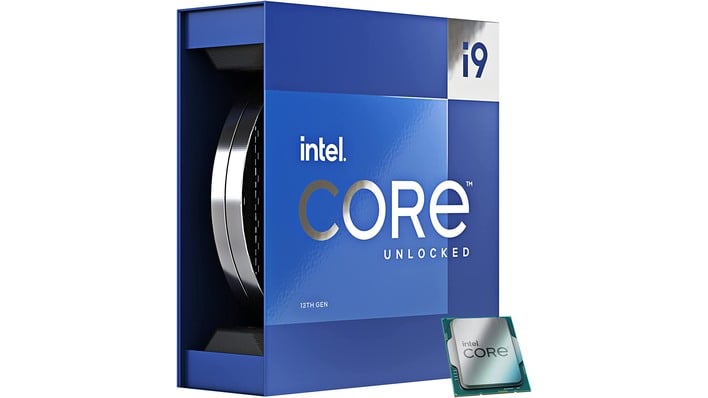[ad_1]
Powerball is a lottery drawing that is conducted in almost any state in the United States. Like most lotteries, it has ridiculously low chances of winning, but big payouts if you do. Well, nobody won the $1.2 billion Powerball last night. That means the value has now grown to about $1.5 billion US dollars, or about half that if you take the cash option. The list of things you could do with one and a half billion dollars is almost endless, but we know the first thing we’d do with that kind of money: build an absolutely over-the-top gaming PC.

Now, the layman could start looking at server hardware, building a system with a massive 64-core EPYC processor and some NVIDIA A100 GPUs. That’s great if you want to run Stable Diffusion to generate AI images, or perform tasks like computational fluid dynamics. For gaming, this kind of hardware won’t get you very far for your money.

In fact, server hardware generally runs well behind consumer hardware for gaming. That’s why we chose the Core i9-13900K as our CPU. Intel’s new Raptor Lake chips are the fastest for gaming, and the 24 CPU cores of this processor also make it quite good at productivity tasks.
Of course, the Core i9-13900K runs pretty hot, so we opted for Lian Li’s refreshed Galahad 360mm AIO liquid cooler to keep it cool. For RAM, your choices now are go big or go fast. We think DDR5-6000 is fast enough, especially with the low 30-cycle CAS latency of this G.SKILL Trident Z5 RGB kit, so we went big with a pair of 32GB sticks, giving us 64GB of memory . That’s enough for almost everything you’re likely to do on this computer over its entire useful life. If you wanted, however, the ASUS ROG MAXIMUS Z790 HERO board has another pair of memory slots to take you to 128 GB. This board also has three M.2-2280 SSD slots as well as a bunch of nice features you only find on fancy motherboards, like 2.5-Gbps Ethernet, Wi-Fi 6E, a pair of Thunderbolt 4 ports and an included ROG Hyper . M.2 card. That gives you an extra pair of PCIe 4.0 x4 slots, which we’ll naturally fill with storage. You want the fastest and most reliable SSD for your system drive, so of course we have to go with the Samsung 990 PRO. In our testing, this drive was among the fastest around, and while Samsung had an early reliability bump with its EVO series, the PRO M.2 family has been solid. Meanwhile, for everything else, we need as much capacity as possible – those AAA games fill up a Steam library very quickly. For our data storage needs, we have a trio of Sabrent Rocket 4 Plus eight-terabyte SSDs. That’s 24 TB of ridiculously fast PCIe 4.0 NVMe storage. It will also succeed with DirectStorage when that hits. For graphics, there is only one option in such a build: the GeForce RTX 4090. We went with MSI’s Suprim Liquid X model because the integrated liquid cooler means that this thirsty GPU will stay frozen while we play. It has a nice little bump over the stock clocks, and it should boost more consistently thanks to the powerful cooling. All this robust hardware needs a powerful power supply, so we went straight to the top shelf with the SeaSonic PRIME PX 1600W model. This is an ATX 3.0 fully modular unit that is 80+ Platinum-rated and, among its other impressive qualities, comes with a pair of 12VHPWR connectors. We only need one now…but who can say what the future will bring? We’ll be plugging these parts into a Lian-Li PC-O11 full tower case. The PC-O11 arguably perfected the side-by-side two-chamber design, where the hot parts go in one side and the cooler parts go on the other side. We don’t have 3.5″ or 2.5″ drives, but the extra space on the “hot” side will make building a lot easier. Finally, as AMD said yesterday, you want to see all those frames you’re making, so we opted for Samsung’s Odyssey Neo G8 display. This is a 3840×2160 (4K UHD) screen with a MiniLED display that achieves true response times as low as 2.1ms thanks to Samsung’s panel wizardry. That’s good because it refreshes at 240 Hz. You’ll need DisplayPort’s Display Stream Compression to run native 4K at 240Hz, but the RTX 4090 is fine for it.
By our count, the price for this machine comes out to just under $11,500, which is an absurd price for a gaming PC, but hey, if you just won $1.5 BILLION dollars, live a little, eh? Plus, you’ll have to buy a lot of games to fill up those 8TB SSDs.
In Case You Don’t Win The Powerball…
Of course, no one has won the power ball yet, and your chances of doing so are infinitesimal. Most of us are of lesser means, and while this machine above is massive and monstrous, there is no need to go that far to join the glorious computer game master race. We have a more sensible build here that will run you less than 15% of the price of that machine, yet play all the same games. The Core i5-13600K gives you almost the same gameplay as its bigger brother above, and the Radeon RX 6800 is a powerful yet powerful GPU that will take many 1440p games to the 165Hz refresh rate of the 31.5″ Acer monitor we’ve chosen. If there’s a weak point in this build, it’s the single 1TB SSD, but that’s easily fixed, as the ASRock Z690 Pro RS motherboard still has two more M.2 slots—to say nothing of its SATA ports.
What do you think of these buildings? If you have any questions or comments, leave them for us below.
[ad_2]
Source link
